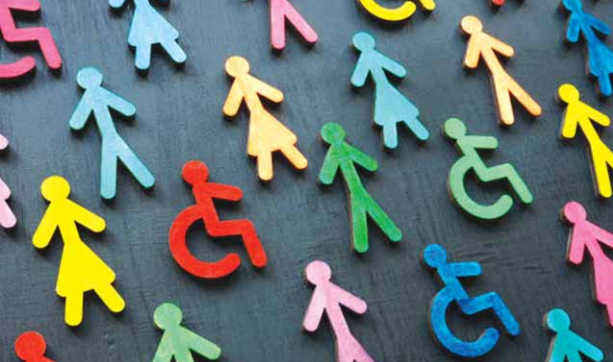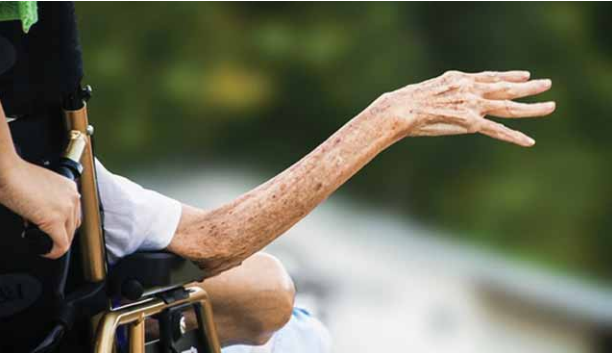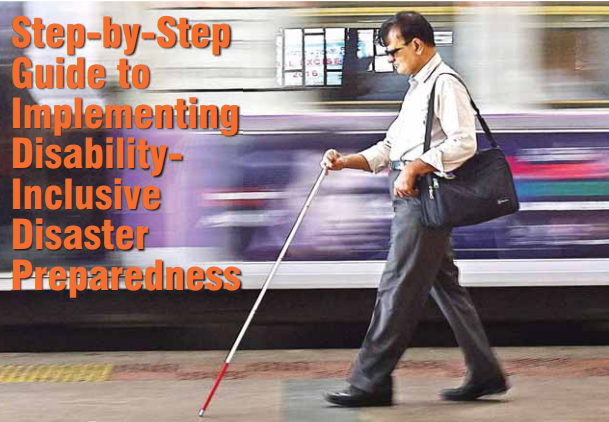In recent years, the call for disability-inclusive disaster management has grown louder, pushing governments and institutions to rethink their policies. Progress has been made — new frameworks acknowledge the need for accessibility, early warning systems are becoming more inclusive, and disability rights are gaining visibility in disaster response planning. But is it enough?
This article takes a critical look at recent policies shaping the intersection of disability and disaster management, both globally and in India. It examines the strides taken, the gaps that persist, and the urgent need for more robust enforcement and accountability. As disasters grow more frequent and severe, ensuring these policies translate into meaningful action is not just a matter of preparedness — it’s a matter of justice.
Introduction
In an era of escalating climate crises, the intersection of disability and disaster management has emerged as a litmus test for global equity. While international frameworks like the Sendai Framework for Disaster Risk Reduction (2015–2030) and national policies such as India’s Rights of Persons with Disabilities Act (2016) have set ambitious goals for inclusion, implementation gaps persist, leaving millions of persons with disabilities (PwDs) disproportionately vulnerable. This 3,000-word analysis critically examines recent policy advancements and failures in disability-inclusive disaster management, both in India and globally. By dissecting case studies, legislative frameworks, and grassroots realities, this article underscores the urgent need to convert rhetoric into action.
I. The Global Policy Landscape: Progress and Paradoxes
1. The Sendai Framework (2015–2030): A Landmark with Limitations
The Sendai Framework, the first global agreement to explicitly prioritize disability inclusion in disaster risk reduction (DRR), mandates “inclusive, accessible, and non-discriminatory” strategies. Key provisions include:
• Priority 1: Understanding disaster risks through disability-disaggregated data.
• Priority 4: Enhancing preparedness through PwD participation.
Progress:
• Japan’s Leadership: Japan’s Basic Act on Disaster Management (2013) legally enforces accessible evacuation routes and shelters, serving as a global benchmark.
• U.S. ADA Compliance: The Americans with Disabilities Act (ADA) requires emergency services to accommodate PwDs, with penalties for non-compliance.
Pitfalls:
• Non-Binding Nature: The Sendai Framework lacks enforcement mechanisms. Only 30% of UN member states report progress on disability-inclusive DRR (UNDRR, 2023).
• Data Gaps: Less than 20% of countries collect disability-disaggregated disaster data (WHO, 2022).
Case Study: Uttarakhand’s Data Blindness
During the 2023 landslides, Uttarakhand lacked a registry of PwDs in high-risk zones, delaying rescues.
2. The UN Convention on the Rights of Persons with Disabilities (CRPD): Unfulfilled Promises
Article 11 of the CRPD obligates states to protect PwDs in emergencies. However, compliance remains uneven:
• Success Story: New Zealand’s Disability Inclusive Disaster Risk Reduction Strategy (2022), co-designed with PwDs, integrates accessible alerts and mobile rescue teams.
• Failure: In conflict zones like Ukraine, PwDs face abandonment due to fragmented evacuation plans.
Critical Analysis: While the CRPD provides a moral framework, its reliance on voluntary state action limits accountability. A 2023 Human Rights Watch report found that 65% of low-income countries lack CRPD-aligned disaster plans.
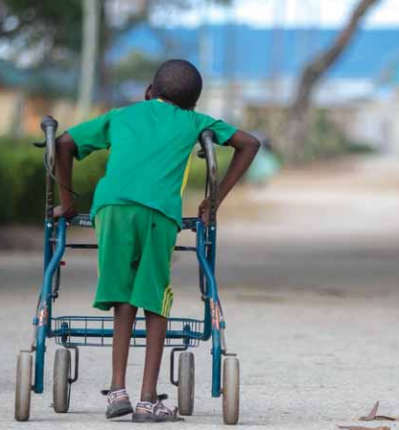
II. India’s Policy Framework: Ambition vs. Reality
1. The Rights of Persons with Disabilities Act (RPWD), 2016
• Section 8: Guarantees equal protection during disasters.
• Section 41: Mandates accessible disaster communication.
Progress:
• Kerala’s Innovations: Post-2018 floods, Kerala integrated sign language interpreters into emergency broadcasts and mapped 12,000 PwDs for targeted.
• Odisha’s Model: Odisha’s Disability-Inclusive Disaster Risk Reduction Plan (2021) trains 15,000 community volunteers to assist PwDs.
Pitfalls:
• Token Implementation: Only 8 states have operationalized Section 41 (NCPEDP, 2023).
• Funding Shortfalls: Just 0.5% of NDMA’s budget is allocated to disability inclusion.
2. National Disaster Management Guidelines (2016): Strong on Paper, Weak in Practice
The guidelines outline:
• Accessible shelters and evacuation routes.
• Training for responders in disability-inclusive.
Critical Analysis:
The guidelines are advisory, not legally binding. States like Bihar and Uttar Pradesh lack localized plans, relying on ad-hoc measures.
III. Critical Analysis: Progress vs. Pitfalls
1. Progress: Seeds of Change
• Tech Integration: Apps like SAMBHAV (India) and Yurekuru Call (Japan) provide real-time accessible alerts.
• Grassroots Leadership: Organizations like the Nayi Disha Collective (Delhi) crowdsource accessibility data to guide PwDs.
• Policy Alignment: India’s 2020 National Policy on Disaster Management references CRPD principles.
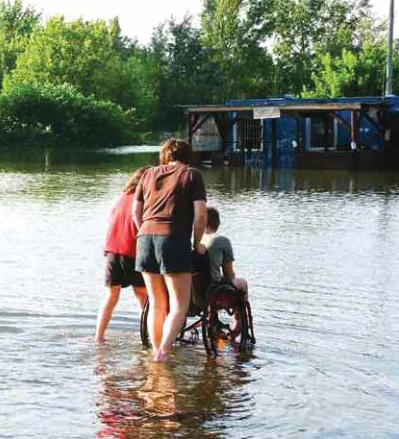
2. Pitfalls: Systemic Barriers
• Non-Binding Policies: Guidelines without legal teeth lead to inconsistent implementation.
• Intersectional Neglect: Women, rural, and tribal PwDs face compounded risks due to caste, gender, and poverty.
• Capacity Gaps: Only 12% of India’s disaster responders are trained in disability inclusion (NIDM, 2023).
3. The Data Dilemma
• Outdated Registries: India’s 2011 Census data on PwDs is obsolete, and only 4 states maintain updated registries.
• Invisible Populations: Over 60% of rural PwDs are unregistered (NCPEDP, 2023).
IV. Case Studies: Policy in Action
1. Odisha’s Cyclone Fani (2019): A Blueprint for Success
• Pre-Mapped Registries: 45,000 PwDs identified in coastal districts.
• Community Volunteers: 10,000 trained in inclusive.
• Result: Zero deaths among registered PwDs.
Lesson: Proactive planning and community engagement save lives.
2. Kerala Floods (2018–2023): Mixed Outcomes
• Strengths: Geo-tagged disability data enabled efficient evacuations.
• Weaknesses: Only 30% of post-flood shelters were accessible.
Lesson: Infrastructure investments must match policy promises.
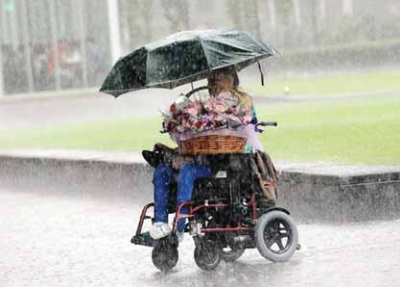
3. Hurricane Katrina (2005): A Cautionary Tale
• Failure: Over 70% of PwDs reported abandonment during evacuations.
• Reform: Post-Katrina, the U.S. mandated accessible evacuation buses under the ADA.
Lesson: Crises expose systemic flaws, prompting reform.
V. International
Comparisons: Learning from Global Leaders
1. Japan’s Binding Standards
• Legally Enforced Accessibility: The Basic Act on Disaster Management mandates ramps, tactile paths, and annual drills.
• Tech-Driven Alerts: The Yurekuru Call app sends earthquake warnings via vibrations and flashing lights.
2. Philippines’ Grassroots Governance
• Barangay Councils: The National Disaster Risk Reduction and Management Act (2010) requires PwD representation in village councils.
• Community-Led Evacuations: PwDs co-design evacuation routes in flood-prone areas.
3. New Zealand’s Co-Designed Solutions
• Partnership Model: The 2022 Disability Inclusive DRR Strategy was co-created with PwDs.
• Tailored Alerts: Vibrating pillows for deaf individuals and braille-ready emergency kits.
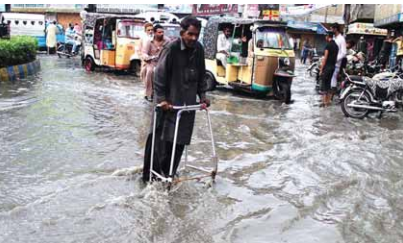
VI. Recommendations: Bridging the Gap
1. Legal Reforms
• Enforce Compliance: Amend India’s Disaster Management Act (2005) to codify NDMA guidelines into binding law.
• Ratify the Sendai Framework: Make disability-inclusive DRR a legal obligation, not a suggestion.
2. Institutional Capacity Building
• Training Mandates: Train 100% of disaster responders in inclusive by 2025.
• Disability Advisory Boards: Establish state and national committees led by PwDs.
3. Data-Driven Strategies
• Real-Time Registries: Use Aadhaar-Provided databases to track PwDs in high-risk zones.
• Disaggregated Reporting: Mandate disability, gender, and caste-disaggregated data in disaster audits.
4. Funding Equity
• Allocate 5% of DRR Budgets: Dedicate funds to accessible infrastructure and assistive technologies.
• Public-Private Partnerships: Leverage CSR funds for innovations like SAMBHAV and TerraWheel.
5. Grassroots Empowerment
• Community Task Forces: Replicate Odisha’s volunteer model nationwide.
• Participatory Audits: Involve PwDs in evaluating shelters and warning systems.
6. Global Collaboration
• Knowledge Sharing: Adopt Japan’s tech-driven alerts and the Philippines’ grassroots governance.
• UN-Led Accountability: Create a global review mechanism for CRPD and Sendai compliance.
VII. Conclusion: From Policy to Practice-A Call for Moral Courage Disability-inclusive disaster management is not a technical challenge but a test of societal values. While policies like the Sendai Framework and India’s RPWD Act provide a roadmap, their success hinges on political will, funding, and grassroots activism. As Cyclone Fani and Kerala’s floods demonstrate, inclusion saves lives—but only when policies escape paper and enter practice. The choice is clear: build systems that uplift the most vulnerable, or risk failing everyone.




